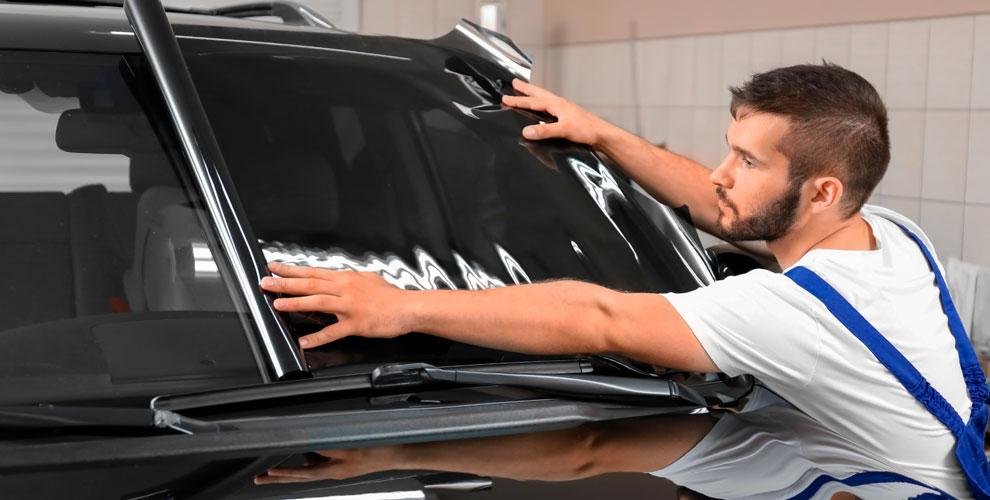Automotive window tinting has become a popular choice for vehicle owners looking to enhance their driving experience. With benefits ranging from improved comfort and aesthetics to increased privacy and protection from harmful UV rays, it’s no wonder that more drivers are opting to tint their car windows. In this comprehensive guide, we will explore everything you need to know about automotive window tinting, including types of tint, benefits, the installation process, and maintenance tips.
Understanding Automotive Window Tinting
Window tinting involves applying a thin film to the interior of a vehicle’s windows. This film can vary in darkness, color, and material, allowing drivers to customize their vehicles according to their preferences. The main purpose of window tinting is to reduce the amount of sunlight that enters the vehicle, which can help regulate the temperature inside, reduce glare, and enhance privacy.
Types of Window Tint Films
When it comes to automotive window tinting, there are several types of films available, each offering different benefits and features. Here are the most common types:
Dyed Window Tint
Dyed window tint is the most basic type of tint film. It is made by layering dye between an adhesive and a protective outer layer. This type of tint offers a darker appearance, reduces glare, and blocks some UV rays. However, dyed tint is not as effective at heat rejection as other types and can fade over time.
Metalized Window Tint
Metalized window tint contains tiny metallic particles that reflect heat and UV rays. This type of tint is more effective than dyed tint at blocking heat and providing privacy. Metalized films can also strengthen the windows, making them more resistant to shattering. However, they may interfere with electronic devices, such as GPS and mobile signals.
Carbon Window Tint
Carbon window tint is a popular choice due to its superior heat rejection properties and aesthetic appeal. It contains carbon particles that help block infrared rays without being reflective. This type of tint does not fade over time and maintains its appearance, making it a long-lasting option for vehicle owners.
Ceramic Window Tint
Ceramic window tint is considered the premium choice for automotive window tinting. It uses advanced ceramic technology to block up to 99% of UV rays and significant heat. Ceramic films are non-reflective and do not interfere with electronic signals, making them a top choice for those looking for performance and clarity. While they tend to be more expensive, the long-term benefits often justify the investment.
Hybrid Window Tint
Hybrid window tint combines the benefits of dyed and metalized films. It offers good heat rejection, UV protection, and glare reduction while minimizing the risk of interference with electronic devices. Hybrid films are a versatile option for drivers who want a balance of performance and aesthetics.
Benefits of Automotive Window Tinting
Investing in window tinting can provide numerous advantages for both the vehicle and its occupants. Here are some of the key benefits:
UV Protection
One of the most significant benefits of window tinting is its ability to block harmful ultraviolet (UV) rays. Prolonged exposure to UV rays can lead to skin damage, including sunburn and an increased risk of skin cancer. High-quality window tint can block up to 99% of UV rays, providing essential protection for drivers and passengers.
Heat Reduction
Tinted windows can significantly reduce the amount of heat that enters a vehicle. This is especially beneficial during hot summer months when temperatures can soar. By keeping the interior cooler, window tinting can help reduce reliance on air conditioning, leading to improved fuel efficiency and a more comfortable driving experience.
Glare Reduction
Glare from the sun or headlights can be distracting and dangerous while driving. Window tinting minimizes glare, allowing for safer driving conditions and less eye strain. This is particularly helpful for those who spend long hours on the road or drive in bright sunlight.
Increased Privacy and Security
Tinted windows provide an added layer of privacy for passengers and belongings inside the vehicle. This can deter potential thieves from targeting the vehicle, as valuables are less visible. Additionally, tinted windows can provide a sense of comfort and security for passengers, especially in crowded areas.
Enhanced Aesthetics
Window tinting can significantly enhance the overall appearance of a vehicle. With various shades and finishes available, drivers can customize their vehicle’s look, making it more stylish and appealing. A well-tinted vehicle can stand out on the road and give a sleek, polished appearance.
Protects Interior
UV rays not only affect the skin but can also cause damage to the vehicle’s interior, including upholstery, dashboard, and trim. Over time, exposure to sunlight can lead to fading, cracking, and deterioration of materials. Window tinting helps to protect the interior by reducing UV exposure, extending the life of the vehicle’s components.
The Window Tinting Installation Process
The installation of automotive window tinting should be performed by a professional to ensure quality and longevity. Here is an overview of the typical installation process:
Choose the Right Film
Before installation, consult with a professional to determine which type of film is best suited for your vehicle and your preferences. Consider factors such as heat rejection, UV protection, and aesthetic appeal.
Prepare the Vehicle
The vehicle needs to be cleaned thoroughly before installation. This includes removing any dirt, debris, or old tint from the windows. Professional installers will often clean the windows using special solutions to ensure a smooth application.
Cut the Tint Film
Once the vehicle is prepared, the tint film is cut to the appropriate size and shape for each window. Accurate measurements are crucial for a proper fit.
Apply the Tint Film
The installation involves applying the adhesive side of the film to the window using a squeegee to remove any air bubbles and ensure a smooth application. This step requires skill and precision to avoid creases or imperfections.
Trim and Finalize
After the film is applied, excess material is trimmed away, and any final adjustments are made. The installer will check for bubbles or imperfections and address them before completing the process.
Cure and Dry
After installation, the film needs time to cure. The drying time can vary depending on the type of film used and environmental conditions. It’s essential to follow the installer’s recommendations regarding rolling down windows and cleaning to ensure the best results.
Maintenance Tips for Tinted Windows
To ensure the longevity and performance of your tinted windows, consider the following maintenance tips:
Avoid Cleaning for the First Few Days
After installation, avoid cleaning the windows for at least three to five days. This allows the adhesive to bond properly to the glass.
Use the Right Cleaning Products
When cleaning tinted windows, avoid using ammonia-based cleaners, as they can damage the film. Instead, use a gentle, non-ammonia cleaner and a soft microfiber cloth to prevent scratches.
Regular Inspections
Periodically inspect the tint for any signs of peeling, bubbling, or fading. If you notice any issues, consult a professional to determine if repairs or replacement are necessary.
Avoid Rolling Down Windows
In the first few days after installation, refrain from rolling down the windows. This prevents the film from being disturbed and ensures a proper bond with the glass.
Protect from Extreme Conditions
If possible, avoid exposing the tinted windows to extreme temperatures or conditions, such as direct sunlight for extended periods, as this can affect the tint’s performance.
Conclusion
Automotive window tinting is a valuable investment that offers numerous benefits, from UV protection and heat reduction to enhanced aesthetics and privacy. With various types of tint films available, drivers can customize their vehicles to suit their preferences while enjoying the advantages of tinting. Whether you’re looking to improve comfort during hot summer days or protect your vehicle’s interior, window tinting is a practical and stylish solution. By understanding the installation process and following maintenance tips, you can ensure your tinted windows provide long-lasting benefits for years to come.






More Stories
Mexico Aluminium Market Report: Trends, Growth Drivers, and Forecast 2024-2032
Residential Window Tinting Enhancing Comfort
Essential Guide to Gate Motor Installation